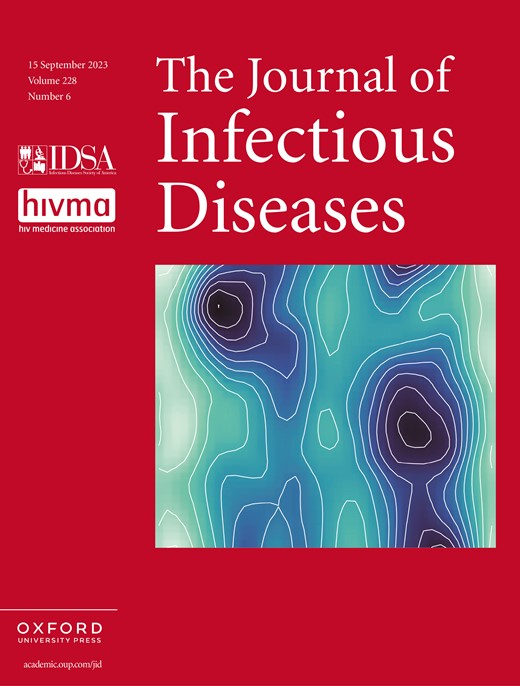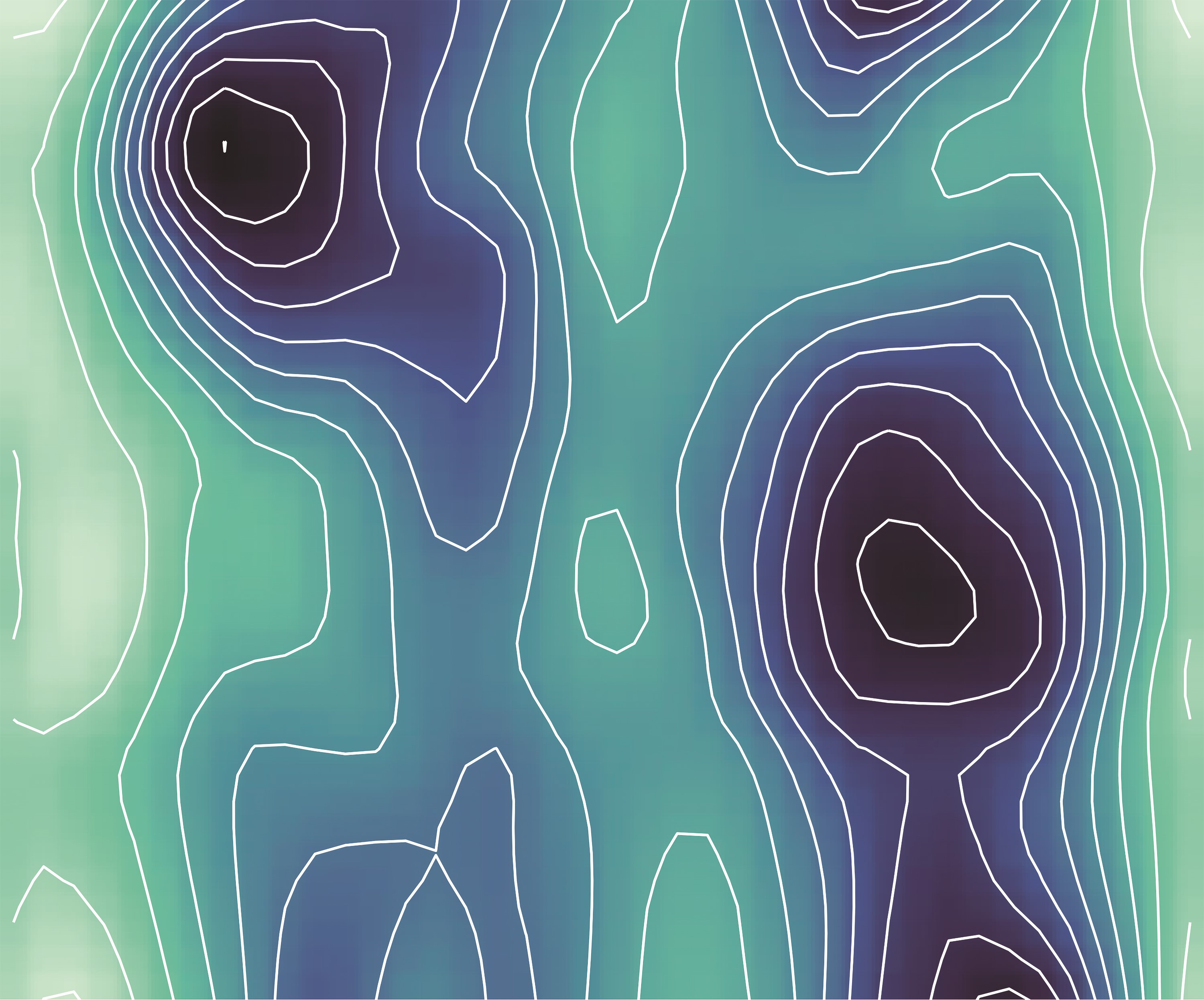
Cover image

Volume 228, Issue 6, 15 September 2023
Editorial Commentary
Redefining the Paradigm: The Role of Sexual Networks and Sexualized Drug Use in the Transmission of Hepatitis C Virus Among Men Who Have Sex With Men
Major Articles and Brief Reports
Viral Disease Pathogenesis
Impact of HCV Testing and Treatment on HCV Transmission Among Men Who Have Sex With Men and Who Inject Drugs in San Francisco: A Modelling Analysis
Modelling projects that HCV incidence will decrease by ≥80% over 2015–2030 (thus, achieving the WHO elimination target) among men who have sex with men and who inject drugs in San Francisco, largely due to high HCV testing and treatment.
Delineating the Seasonality of Varicella and Its Association With Climate in the Tropical Country of Colombia
The spatial variability in varicella seasonality across the tropical climates of Colombia may be explained by differences in the seasonal patterns of humidity across municipalities. This has implications for epidemic preparedness and vaccine program evaluations in tropical countries.
Nationwide Hepatitis C Serosurvey and Progress Towards Hepatitis C Virus Elimination in the Country of Georgia, 2021
Results of a 2021 nationwide serosurvey in Georgia indicate the country has reduced the prevalence of hepatitis C virus infection from 5.4% to 1.8% among adults since initiating a national hepatitis C elimination program in 2015, a reduction of 67%.
The Role of ALPK1 in Inhibiting Hepatitis B Virus Replication Facilitates the Identification of ALPK1 P660L Variant for Predicting Response to Pegylated Interferon α Therapy
By activating the JAK-STAT pathway, alpha kinase 1 (ALPK1) exerts anti-hepatitis B virus effects in hepatocytes. Furthermore, the ALPK1 P660L variant predicts response to pegylated interferon α therapy in hepatitis B e antigen-positive patients with chronic hepatitis B.
Humoral and Cellular Immunity Induced by Adjuvanted and Standard Trivalent Influenza Vaccine in Older Nursing Home Residents
We find that standard and adjuvanted influenza vaccines both induce increases in humoral and cellular immunity that contract to baseline by D180. In the 2016–2017 influenza season, the primary difference between vaccines was humoral antineuraminidase immunity to A/H3N2.
Covid-2019 Disease Pathogenesis
Environmental Impact Assessment for the Use of an Orally Aerosolized Adenovirus Type-5 Vector-Based COVID-19 Vaccine in Randomized Clinical Trials
Vaccination with the orally aerosolised Ad5-nCoV could result in some spillage of the vaccine vector viral particles in the environment. However, improvement of the vaccine nebulizer could reduce the potential risk of viral particles exposure associated with the vaccination.
De Novo Human Angiotensin-Converting Enzyme 2 Decoy NL-CVX1 Protects Mice From Severe Disease After Severe Acute Respiratory Syndrome Coronavirus 2 Infection
We show that NL-CVX1, a de novo human angiotensin-converting enzyme 2 protein decoy that blocks viral cell invasion, prevents severe disease after severe acute respiratory syndrome coronavirus 2 (SARS-CoV-2) infection in mice and may constitute a potent anti–SARS-CoV-2 treatment.
Strong CD4+ T-Cell Responses to Ancestral and Variant Spike Proteins Are Established by NVX-CoV2373 Severe Acute Respiratory Syndrome Coronavirus 2 Primary Vaccination
Primary series of NVX-CoV2373 vaccine with Matrix-M adjuvant induces polyfunctional CD4+ T-cell responses of balanced to moderately Th1-biased phenotype. Essentially equivalent cytokine production by vaccinee cells can be stimulated by spike proteins of ancestral or multiple variant sequences.
HIV/AIDs
Association of a Polygenic Risk Score With Osteoporosis in People Living With HIV: The Swiss HIV Cohort Study
An individual polygenic risk score was associated with osteoporosis in people living with HIV. The genetic effect was robust, as it persisted after multivariable adjustment for established traditional and HIV-related osteoporosis risk factors, including tenofovir disoproxil fumarate and boosted protease inhibitor exposure.
Comparison of Resting State Functional Connectivity in Persons With and Without HIV: A Cross-sectional Study
This study examined differences in RSFC in persons with and without HIV. Analysis showed RSFC was not affected by HIV status. Within persons with HIV no differences in RSFC were seen with regards to detectable viral load or cognitive impairment.
Parasites
Accumulation of Neutrophil Phagocytic Antibody Features Tracks With Naturally Acquired Immunity Against Malaria in Children
This study highlights age-related evolution of malaria-specific antibody response and shows the natural evolution of functional humoral immunity to Plasmodium falciparum with age. Additionally, these data implicate specific antibody Fc-effector profiles in the control of malaria-associated disease in children.
Amplicon Sequencing Reveals Complex Infection in Infants Congenitally Infected With Trypanosoma Cruzi and Informs the Dynamics of Parasite Transmission
Amplicon sequencing of congenital chagas infection reveals complex infection in infants, suggesting that congenital infection is the result of multiple inoculating parasite clones.
Bacterial Disease Pathogenesis
CRISPR Correction of the GBA Mutation in Human-Induced Pluripotent Stem Cells Restores Normal Function to Gaucher Macrophages and Increases Their Susceptibility to Mycobacterium tuberculosis
Gaucher disease is an autosomal recessive lysosomal storage disorder caused by GBA gene mutations, which result in macrophage dysfunction. CRISPR correction of L444P GBA mutation in hiPSCs restores normal function to Gaucher macrophages and increases their susceptibility to Mycobacterium tuberculosis.
Bacterial Vaginosis and Spontaneous Clearance of Chlamydia trachomatis in the Longitudinal Study of Vaginal Flora
A secondary analysis utilizing a large, observational cohort of reproductive-age women revealed 48% of untreated urogenital chlamydia visits spontaneously cleared within the next 12 weeks. Amsel- and Nugent-defined bacterial vaginosis were associated with greater odds of persistence versus spontaneous clearance.
Antimicrobial Resistance Profiling and Genome Analysis of the penA-60.001 Neisseria gonorrhoeae Clinical Isolates in China in 2021
High-level antimicrobial resistance profiling of isolates from China in 2021 revealed sustained transmission of the penA-60.001 Neisseria gonorrhoeae clinical isolates, which might threaten further ceftriaxone treatment effectiveness.
Review
Latest Advances in the Application of Humanized Mouse Model for Staphylococcus aureus
Staphylococcus aureus is a dangerous human pathogen and humanized mice can overcome various limitations of traditional mice to better translate in vivo findings to humans, and are thus a promising mouse model.



